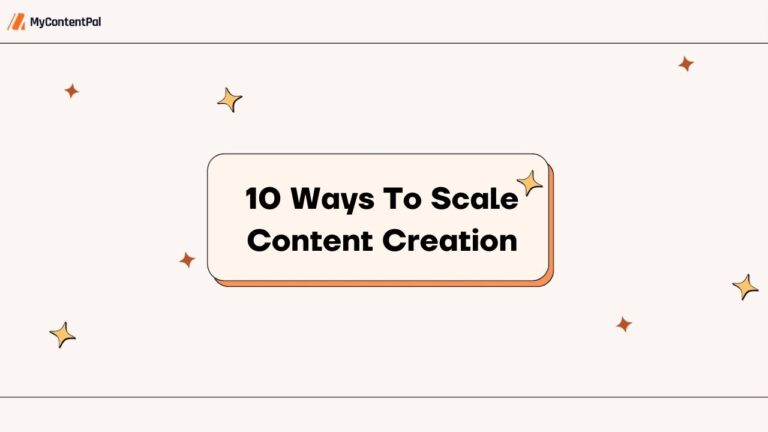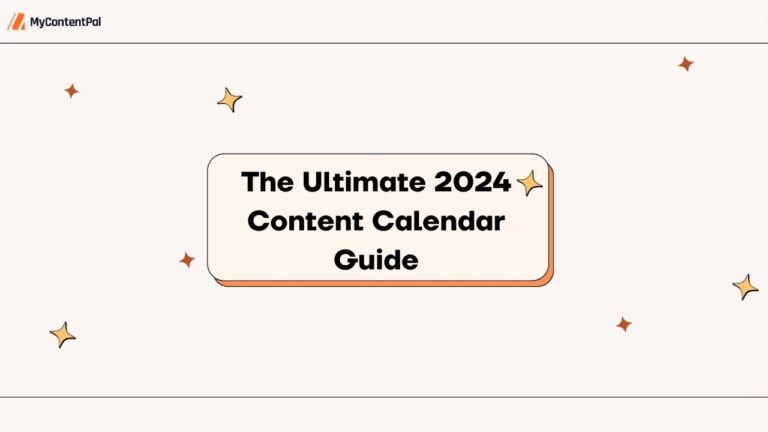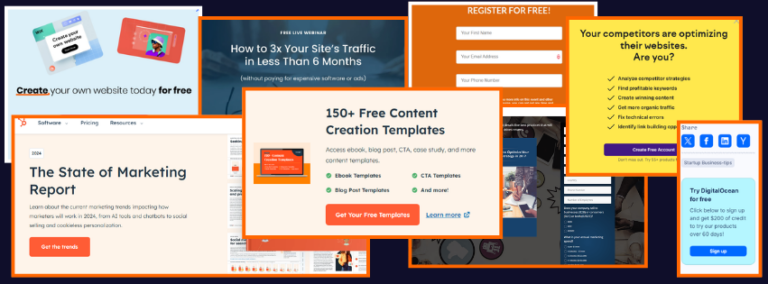Standing out in B2B marketing requires a lot more than just traditional advertising. Instead, you have to learn to craft ultra-compelling narratives. You should also be offering your audience valuable insights, and building real, genuine connections with them.
Part of ensuring content marketing success is looking at the industry leaders. They can serve as great examples of where to place your digital marketing efforts and how to think outside the box. I’ve spent a lot of time studying the nuances that have made these leaders so successful – and now I’m ready to share my findings with you!
1. HubSpot
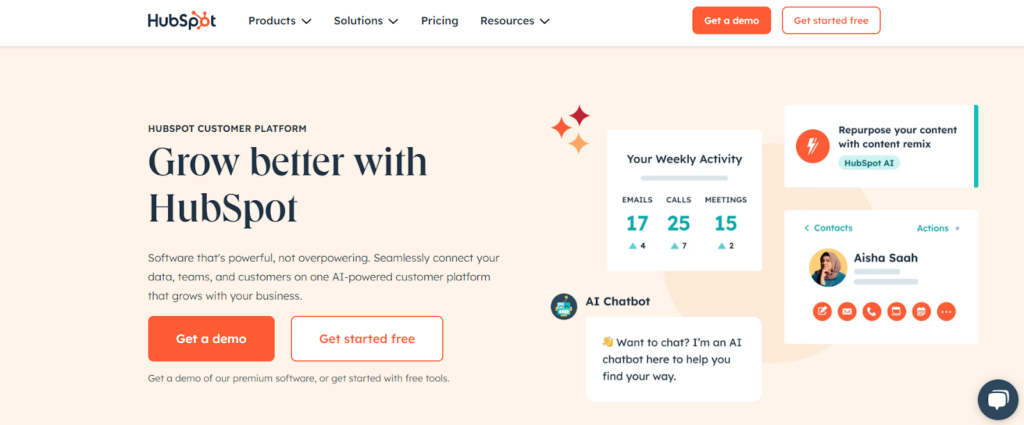
When I think about a top-notch example of B2B content marketing, HubSpot always springs to mind first. They have a full suite of customer relationship management (CRM), inbound marketing, and sales tools. And it’s this suite that helps to give them the upper hand as thought leaders within the industry.
What I like about HubSpot’s approach is that it revolves around educating rather than selling. In fact, they really embrace the principles of inbound marketing to attract and engage with their audience. Their ‘content arsenal’ also includes blogs, newsletters, videos, podcasts, and tons of resources that are tailored to different segments of their B2B and B2C clients.
That is actually one of Hubspot’s greatest strengths – their audience segmentation. By mastering this, they stay relevant across various customer profiles. Plus, they excel in repurposing and updating their content. This helps maintain their top search ranking positions and keep their audience engaged.
One of the main components of their content marketing strategy, though, is the HubSpot Academy. This offers educational and high-quality content. Not only does this build their credibility but it also nurtures trust with their audience. As a result, they reap the rewards through effectively driving conversions.
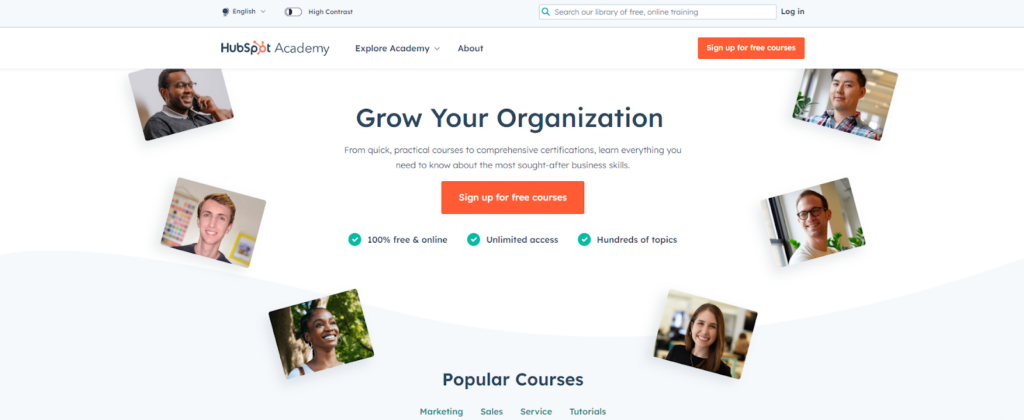
How to apply this in your own content marketing strategy
- Create educational content: Like Hubspot, you should prioritise creating content that educates your audience rather than just promoting your products or services. You should also focus on using this content to address their pain points. You can provide valuable and unique insights to showcase your expertise in your field.
- Have some content variety: Diversify your content and the formats you use. This will appeal to different parts of your audience in various stages of the buyer’s journey. You should consider incorporating things like webinars, blogs, videos, downloadable resources and even podcasts into your strategy. If you’re looking for inspiration, check out these best B2B marketing podcasts to find valuable insights that can enhance your content strategy. Remember to have a good B2B content distribution strategy in place, too.
- Audience segmentation: Take a page from HubSpot’s book and segment your audience based on their needs and interests. Then, take what you’ve learned about these segments and put it into practice. Create relevant content that resonates with different customer profiles.
2. Salesforce
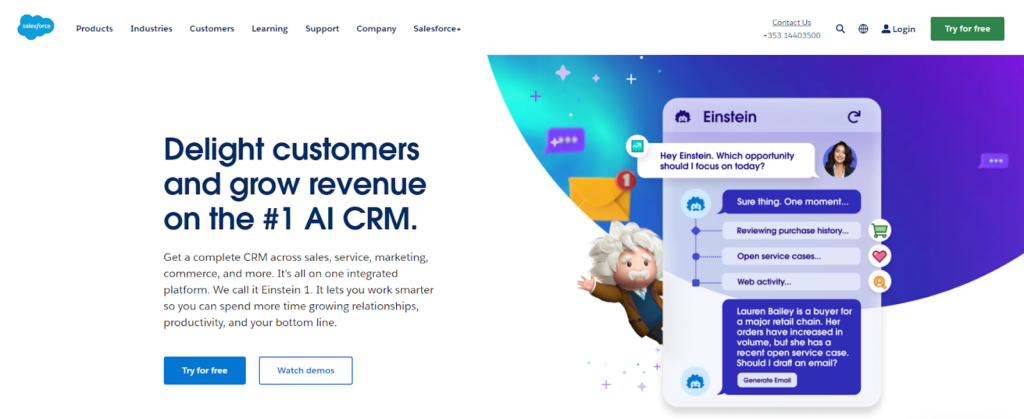
Salesforce is another example of how focusing on educational content can boost your marketing efforts. Their strategy is all about deepening their connection with their customers while never missing an opportunity to showcase their expertise in CRM and enterprise solutions.
One standout example of their approach is a three-month content campaign. In this, Salesforce tried out some really unique content formats. And it worked! They made it their mission to incite audience engagement through humour and shared this through their sales and marketing videos. They even created a stop-motion presentation on SlideShare that had people talking about their business for ages.
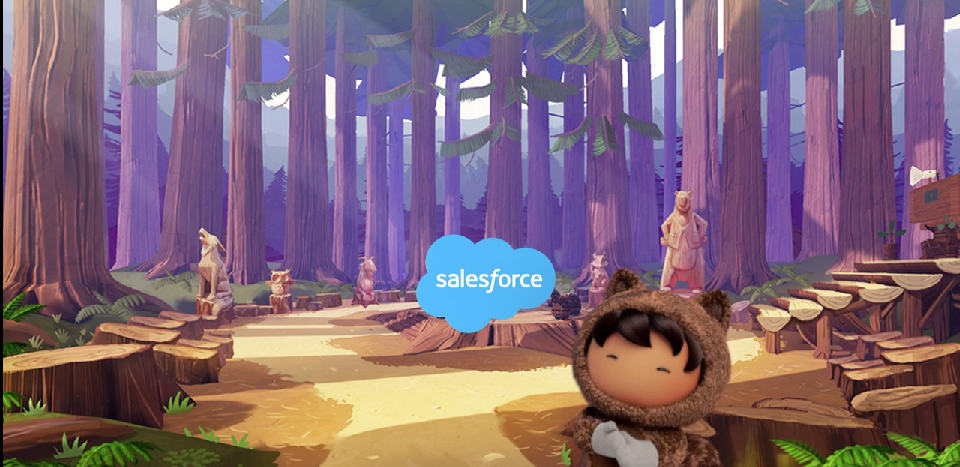
They weren’t only successful in creating a connection with their audience – they also injected life and personality into their enterprise-focused platform (which can be pretty hard to do). As a result, there was also a boost in their metrics, including:
- Their overall traffic
- Ebook downloads
- Newsletter signups
Thinking outside the box in a competitive market like B2B content marketing is incredibly important for growth. And Salesforce is a shining example of what it can do for your business.
How to apply this in your own content marketing strategy
- Don’t be afraid to get creative: Like Salesforce, you shouldn’t be afraid to experiment with unique content formats. They will make you stand out in your industry. Videos, animated stories, and even interactive presentations can easily set you apart from the competition. Plus, it really brings your brand to life, which always resonates with audiences.
- Campaign innovation: Plan your own short-term content campaigns that focus on specific themes or topics. And don’t shy away from using humour or storytelling to make complex topics easier to understand or more engaging.
- Content creation and distribution: Using different content distribution channels can really amplify the reach your content has. You should also experiment with different channels to see which ones your audience responds to. That way, you can customise your distribution strategy to suit different segments of your audience.
3. Slack
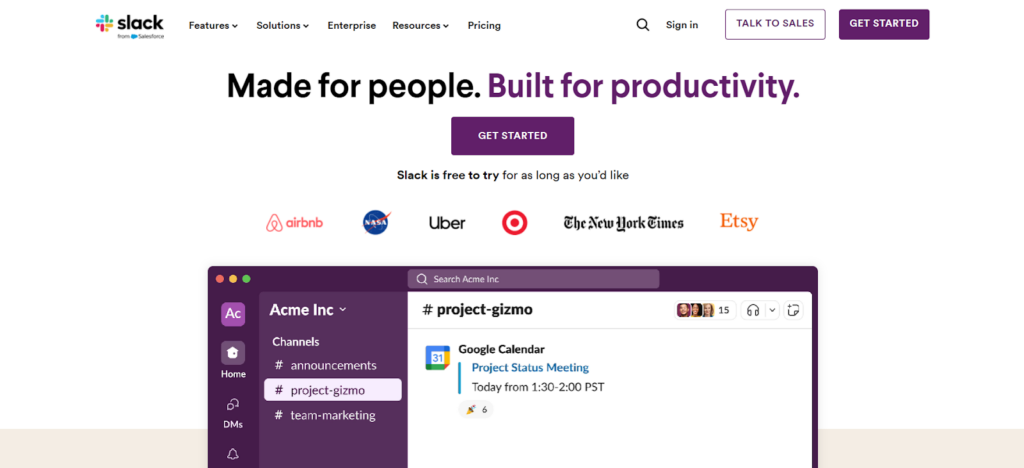
When it comes to B2B content marketing, Slack sets the bar high thanks to its diverse and super-engaging content strategy. Overall, it has some incredibly comprehensive resources, tailored to meet the needs of its customers – from small startups to bigger, more well-known enterprises.
The content strategy here is simple: Slack’s focus is on creating a brand that feels cool, fun, productivity-obsessed, and (most importantly) relatable.
Additionally, all of their content, including blogs, reports, and guides, is centred around two central themes:
- Collaboration
- Transformation
And, since they put out a wide variety of content, they’re more able to keep their audience engaged.
A prime example of Slack’s innovative approach is the three-month campaign it started in 2020. This is much like Salesforce’s short-term campaign. But Slack did it a little differently…
It began to roll out tips, stats, and case studies that were dedicated to showcasing the work-from-home lifestyle. This just goes to show how impactful relevant content can be. Plus, this strategic move made Slack the go-to resource for companies that were transitioning to remote work.
There’s another reason I chose Slack as one of the best B2B content marketing examples, though. And that’s its ability to use social media marketing to its advantage. It consistently uses social media posts to boost engagement, including:
- Instagram Stories and Highlights to show off new features.
- Sleek and minimal Facebook posts to promote its blog content.
- A consistent presence on its YouTube channel that publishes 2 – 3 videos every week.
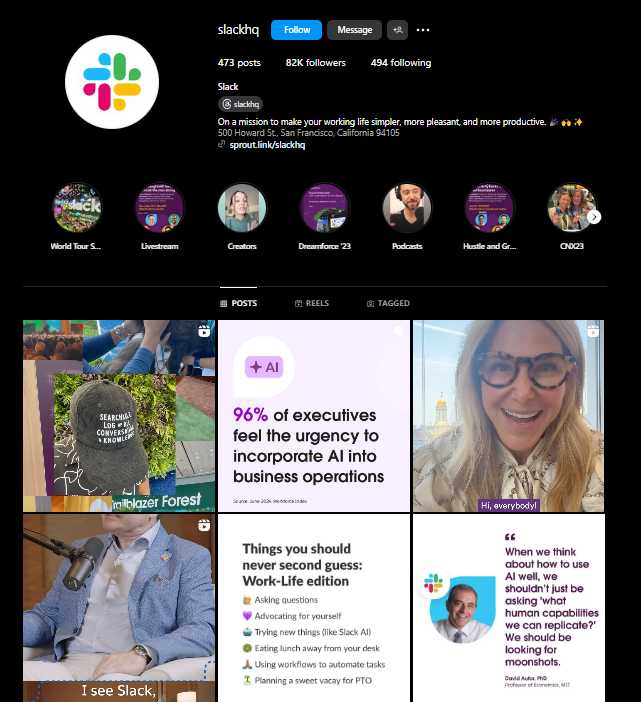
How to apply this in your own content marketing strategy
Experiment: Most good marketing strategies are born out of experimentation. So, don’t be afraid to try new formats and approaches. You may just be surprised at what your audience responds to – and what they don’t.
Always tailor your content to your audience: Like Slack, you can offer a range of content types to your audience. After all, variety can help you reach different segments of your audience and keep them engaged with your posts.
Use social media marketing: Having a strong social media presence and using your posts to market your content is a great idea. Make sure to utilise features like Instagram Stories, LinkedIn ads, and YouTube videos. That way, you’ll reach your audience where they’re most active.
4. Semrush
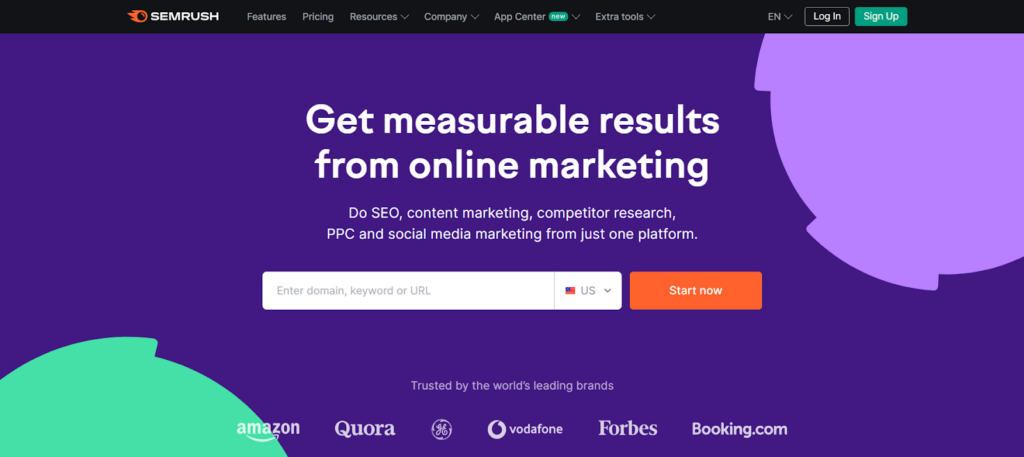
Semrush is a total trailblazer when it comes to the strength of its B2B content marketing strategy. It revolves around providing valuable resources that cater to the needs of digital marketers, SEO specialists, and businesses that want to enhance their online presence.
But how do they do this? Well, through blogs, webinars, and insights. These cover the latest trends in digital marketing, search engine optimisation (SEO), pay-per-click (PPC) ads, and social media. Additionally, they offer super-detailed user manuals, videos, and how-to guides through their Help Center. This helps to ensure their users can effectively use their tools to achieve their goals.
Despite all of this, the thing that sets Semrush apart is the Semrush Academy. This platform offers free online courses and certifications in SEO and digital marketing. They not only teach users how to use Semrush tools but also give users foundational knowledge on SEO tactics. These range from technical SEO to keyword research.
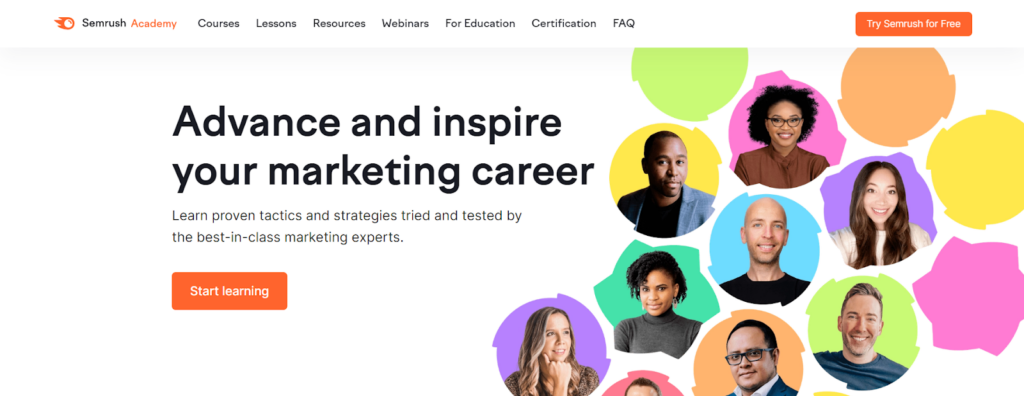
What I love is that this educational content is seamlessly integrated with product-led marketing. In turn, it highlights tools like the Topic Research Tool while focusing on broader content marketing strategies.
Another valuable resource from Semrush is their GoodContent Hub. This acts as a central repository for content marketing resources and tools. Plus, the Local SEO Hub gives its users advanced insights into tools to help them excel in SEO. That way, they have a competitive advantage in their local search results.
How to apply this in your own content marketing strategy
- Build trust: You can establish your brand as an authority in your industry by offering webinars, online courses, and certifications. Not only will this build trust, but it will also engage a more diverse audience.
- User-centric solutions: You should always identify your users’ pain points. Then, create content that provides them with practical solutions. Offer them things like downloadable templates, checklists, toolkits, ebooks, and even white papers to give them more value.
- SEO optimisation: When you use strong SEO strategies, you can boost your visibility in search engine results. That means more eyes on your content and more traffic to your website! It can also set you apart as a leader in your industry if you use strategic keyword placement, effective internal linking, and optimised URL structures.
5. Grammarly
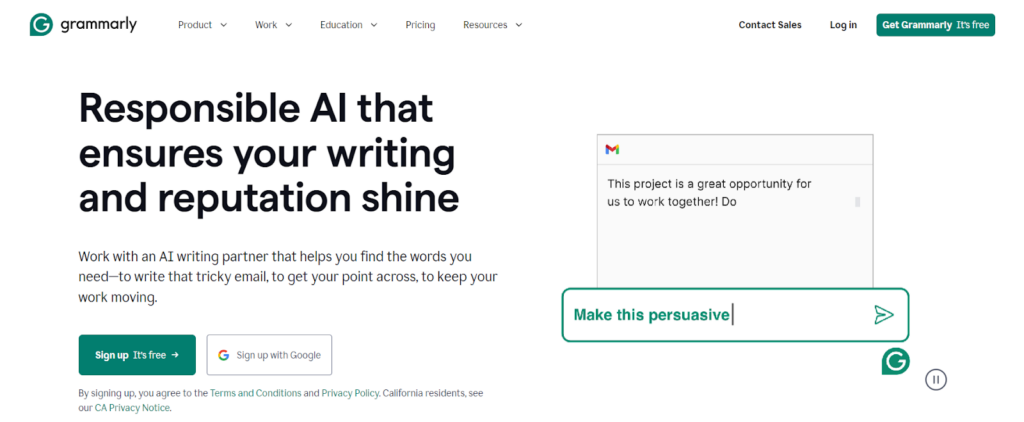
Grammarly has absolutely nailed B2B marketing thanks to its unique and innovative use of content clusters.
Content clusters are groups of web pages and blog posts that are centred around a specific topic. What’s great about this is that it can form part of a larger strategy simply by making it easier for your readers to find what they need on your site. When they can easily navigate to what they want to see, they’re going to be more engaged and, in turn, more likely to convert.
Another benefit of content clusters is that they can help you rank better in the search engine results pages (SERPs). This has a domino effect since you’re more likely to be seen by your target audience, meaning you’ll inevitably bring in more website traffic. And so the cycle repeats itself!

Grammarly’s blog is the perfect example of content clustering. In fact, they have thousands of articles targeted at writers who want to improve their skills. You can find everything you need quickly and easily, too, whether it’s a blog post on grammar tips or writing style advice.
But Grammarly’s content isn’t only educational. It’s fun, too. They publish things like quizzes and tips to keep their audience entertained, which brings in a tonne of easy and effortless engagement.
How to apply this in your own content marketing strategy
- Use content clusters: When you organise your content around primary topics like Grammarly, you make it much easier for your target audience to find exactly what they’re looking for. This means you’ll have a lower bounce rate on your website. And the more time your audience spends on your site, the better! Plus, you can use clusters to improve your SEO. It’s a win-win.
- Incorporate interactive elements: Interactive elements like quizzes or even polls help to get your audience actively engaging with your content. Plus, things like quizzes can give you a good insight into what they think about your product or service.
- Strategic grouping: Navigation on a website is often overlooked in B2B marketing. But it shouldn’t be. After all, your audience won’t retain their interest in your content if they can’t find it (or, at least, if it isn’t easy enough to find). So make sure that your content is always well-organised to help them navigate it more easily.
6. Canva
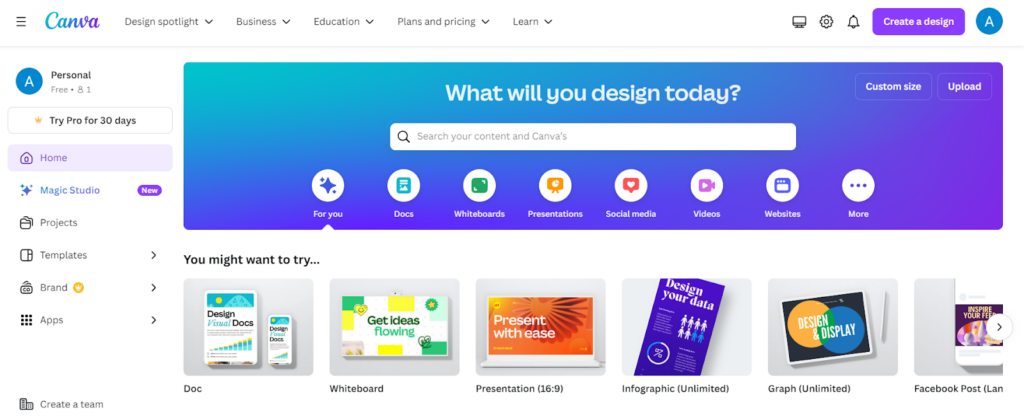
Canva is the go-to graphic design platform for creating content like social media graphics, presentations, and more. The brand has set a high bar for B2B content marketing by creating a unique and dynamic strategy that resonates with an incredibly broad audience.
One of Canva’s main strengths lies in its ability to tailor its content to different buyer segments. They really understand the needs of startups, small businesses, and massive enterprises. And they show that by crafting content that directly appeals to each and every group.
This personalised approach not only attracts a tonne of traffic but also easily converts visitors into loyal customers.
What made me use Canva as a great B2B content marketing example, though, is its landing pages. They’re meticulously designed to be both visually appealing and highly functional.
Canva also follows SEO best practices to ensure that they’re highly visible on the SERPs. This drives a substantial amount of organic traffic. Plus, these pages are optimised to guide its users through the customer journey, from discovery to conversion.
Not only that, but its blog is an absolute treasure trove of valuable content and information. It has a plethora of articles that help its users enhance their design skills, keep up with industry trends, and use the platform to its full potential. Now that’s smart marketing.

How to apply this in your own content marketing strategy
- Create amazing landing pages: Designing visually appealing landing pages like Canva’s allows you to follow SEO best practices and drive more organic traffic.
- Adapt to your audience’s needs: One thing Canva doesn’t struggle with is staying relevant. So you may want to take notes! It stays relevant year after year by simply updating its product offerings based not only on customer feedback but on the latest industry trends, too.
- Visual elements: Canva’s site is bright, colourful, and demands attention. And the same is true for their other marketing channels like their social media posts. Since it’s part of Canva’s brand to have a lot of visual appeal, it’s no surprise that they excel in this regard. But you can actually apply this to any industry for any product or service.
7. Backlinko
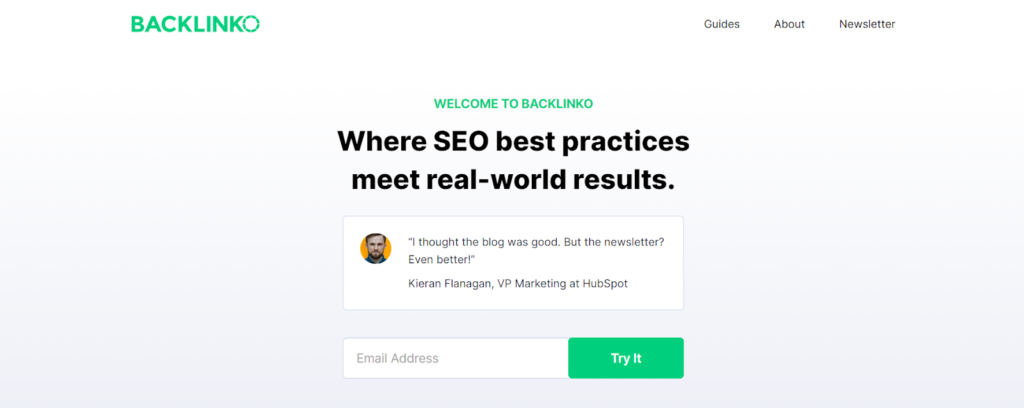
Backlinko, which was founded by SEO expert Brian Dean, is the prime example of how delivering high-value content can establish thought leadership in the B2B space. Brian’s approach to content marketing places a lot of emphasis on the quality of the content being rolled out rather than how often or how much is being posted.
So, rather than finding pages and pages of published content on Brian Dean’s blog, you’re going to find fewer articles. But they’re worth their weight in gold. All of his content is in-depth and uses case studies that provide his readers with actionable insights.
Among these super-detailed articles are also pieces that aim to help users boost their organic search rankings and drive more traffic to their sites. Typically, he only publishes this content around once (maybe twice) a month. But they’re all jam-packed with data, examples, and practical advice based on personal experience.

Brian’s credibility is also important to note here. In fact, he has become a well-known thought leader. And he’s done this by referencing his own achievements through his YouTube channel and other personal success stories. This lends a certain authority and trustworthiness to his advice.
Additionally, by sharing real-life examples and results, Brian always makes sure to show his expertise. As a result, he is able to foster a much deeper connection with his audience.
How to apply this in your own content marketing strategy
- Prioritise quality over quantity: Like Backlinko, you should focus on producing fewer yet more in-depth and valuable content. High-quality content that offers actionable insights will attract way more customers than 10 posts that are sub-standard and don’t offer your audience any real value.
- Comprehensive content: Make sure to create detailed, data-rich articles and case studies that comprehensively cover your topics. You should also use a mix of text, images, and videos to enhance your messages and your customer’s understanding.
- Offer practical advice: Your content should always offer practical, actionable advice that aligns not only with your business but with industry best practices as well. This will help your audience to achieve their goals and see results. In turn, this fosters more loyalty to your business.
FAQs
What is the most effective B2B content?
The most effective B2B content is educational, highly relevant, and tailored to the specific needs of your target audience. This includes:
- In-depth blog posts
- Whitepapers
- Case studies
- Webinars
But why are these the most effective? Well, because they address common pain points by offering practical advice, all while showcasing industry expertise. This tends to resonate really well with B2B audiences since their needs are very different compared to B2C audiences.
Just remember that by adding visual elements like images or videos, you can make this seemingly ‘boring’ content much more engaging. Your content should also always include some form of personalisation and very clear messaging. These are key components of B2B marketing.
What are the key elements of a successful B2B content marketing strategy?
I’ve found that there are six main elements that you need to build an effective B2B content marketing strategy. These include:
- Understanding your target audience through detailed buyer personas.
- Creating high-quality, educational content that can help your customer with a problem – builds trust and authority.
- Diversifying your content formats for broader engagement.
- Strong SEO practices for better visibility.
- Using effective distribution channels that resonate with your ideal audience. This will help amplify your reach.
- Regularly analysing the performance of your strategy to improve it and stay ahead of the curve every time.
Final Thoughts
Growing your business and learning by example is one of the best things you can do in B2B content marketing. But it can also be pretty tricky to identify where exactly your marketing efforts are and aren’t working.
If you want some perspective on how to apply these examples to your business, be sure to book a call with me. Together, we can create a content marketing strategy that will blow your competitors out of the water and get you real, measurable results.

